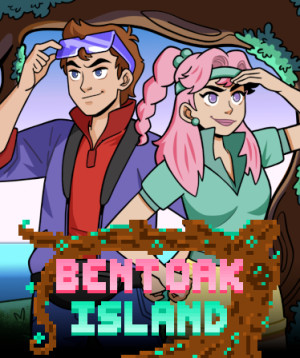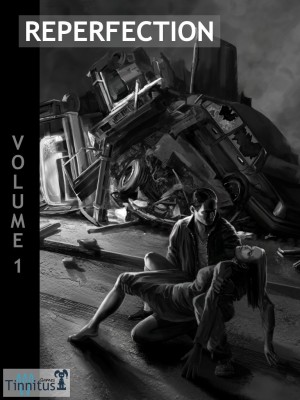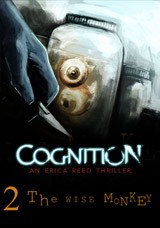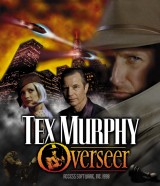Review for Journey
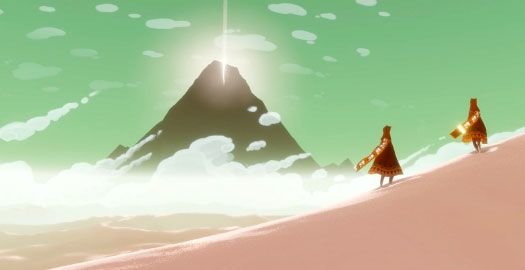
I had the idea for Journey in middle school. I’m not even kidding. In the late '90s, a friend and I developed an idea for a game (which is what we did instead of play soccer with the kids who had lives) in which players took on the role of an androgynous, wispy protagonist with a long, flowing red scarf, waking up in a surreal, vaguely apocalyptic landscape. The gameplay would consist purely of exploring the world and discovering why you were there. There would be no combat and only the lightest of puzzle-solving or platforming. We were kind of weird.
So imagine my surprise when I came across Journey, in which you play as a wispy, androgynous protagonist with a long, flowing red scarf, waking up to explore a surreal, vaguely apocalyptic landscape that contains lots of exploration and only light puzzle-solving and platforming elements. Clearly Jenova Chen, founder of thatgamecompany, is skilled in either inception or wizardry.
Journey, of course, is a much better game than the one we devised in middle school. For one thing, it exists. For another, this PlayStation 3 exclusive is a fantastic piece of work that deserves a place among the classics and to be routinely discussed as a modern milestone in the history of gaming. The developers had already staked out their niche in designing quietly beautiful, avant garde games like flOw, in which you play as a simple organism fighting for survival in the primordial ooze, and flower, in which you play as a gust of wind collecting flower petals. Journey is bigger than those games, more ambitious, more satisfying and emotional. It’s simultaneously more familiar and more innovative. Above all, it’s a triumph.
The game begins with your character, a robed and bescarved humanoid, waking up in the desert. In the distance is a mountain with a gleam of light at its summit... And that’s it—that’s the setup. In that moment, the titular journey is made crystal clear: Go to the mountain. The story is fleshed out as you continue through silent cutscenes that depict the history of the ill-fated civilization whose lands you are exploring, but as it is told wordlessly it always retains an air of mystery and awe. Eventually it becomes somewhat clear what your origin, goal, and purpose is, though it may take multiple playthroughs to fully interpret the cryptic goings-on.
The backstory is there to discover, and it’s highly intriguing, but it’s clear that the focus is on—you guessed it—the journey itself rather than the reasons for undertaking it. On your quest you’ll progress from chapter to chapter, encountering a pleasantly varied smattering of gameplay styles. Some chapters are linear and tightly-scripted while others are relatively open, gating you into a larger area that can be explored at leisure.
All of them are gorgeous. From the early desert valleys to the snowy slopes of the mountains, simply moving through each area is a joy, largely because of the game’s painterly look, with strong earth tones and a cartoonish but mature style. The environments are full of picturesque dunes glittering in the sunset, crumbling ruins of ancient machinery, and overwhelming vistas in the distance. Wonderful small details abound, like the trails left behind as you glide across the sand, as do large details like the impressive draw distance that lets you gaze out over the rooftops of a long-dead city. And Journey is as technically polished as it is artistically accomplished. The solid frame rate never dips even during scenes of great activity, and the game is filled with impressive shaders, post-processing, and other bells and whistles used to great effect.
Even better than the visuals is the sound. There’s a reason that Austin Wintory’s original score for Journey was up for a Best Score Grammy against Hollywood icons such as John Williams, Hans Zimmer, and Howard Shore. The soundtrack is absolutely phenomenal, resembling more the movements of a symphony than a collection of discrete tracks. Moving smoothly from soaring violins to feisty pizzicatos to dissonant cellos, the string-heavy score brings emotional heft to every chapter. It’s a credit to Wintory’s work that the music seems to constantly mold itself to your experience, when in fact the score is non-interactive (outside of reaching certain checkpoints, which will trigger a change of cues). The soundtrack works just as well outside of the game, and the album has been a mainstay on my mp3 player since the game was released.
Journey is played in third-person, and controls most like a platformer. You can move freely through the environment, jumping, gliding, and sliding. And you’ll need to in order to overcome the game’s towers, mountains, caverns, and valleys. One of the guiding principles here is minimalism, however, and to that extent the list of controls is very short. You can move, control the camera (either with the gimmicky Sixaxis motion controls or the more traditional right thumbstick), jump, and “ping,” which will require a bit of explanation.
Jumping and floating forms the core of the gameplay. The almost angelic animations of the protagonist fit perfectly with the floaty controls. Normally in a game that involves platforming, “floaty” controls would be a negative, but here they create a uniquely exhilarating sensation. Holding down the jump button allows you to fly and glide for extended periods of time. As you progress through the game, you’ll gain the ability to jump higher and glide further. This feels natural from the get-go and before long you’ll be a master of your environment, soaring from ledge to ledge like a leaf caught in a breeze. The movement is so forgiving that the platforming is never frustrating. And unlike many platformers, there is no penalty for falling—no infinite abysses, no spike traps, no death at all (this goes for the entire game—it is possible to be hurt during some segments but never to die). It becomes a soothing, freeing experience.
I said that the game involves only light puzzle-solving and I meant it—there aren’t very many and none of them will stump you in the least. There is no inventory and no dialogue, as the puzzles are all exploration-based. In one chapter, you’ll find yourself interacting with objects in order to construct a bridge of scarf-creatures; in another you’ll need to observe flocks of scarf-creatures in order to navigate in a wide open desert. You won’t find doors locked by codes or riddles, and everything in the game can be surpassed by walking around and pinging the right objects. That might sound disappointing to some, but in fact it’s one of the reasons the game never loses its essential flow. More difficulty would have meant bringing the journey to a screeching halt while you pushed blocks around or what have you. That kind of thing is fine, even welcome, in most adventure games, but here it would have been a detriment to the overall experience.
Pinging is the primary method of interacting with the world. When its button is pressed, your character emanates a sound and a blast of some sort of innate power. The world of Journey is dotted with a red, ribbon-like material similar to that of your character’s robe and scarf. These ribbons, which take the form of everything from scarf-elevators and scarf-bridges to scarf-birds and scarf-dragons, are imbued with magical power, and pinging is the way to activate this power. Ping a red ribbon sticking out of the ground, and you’ll be able to float up its length and reach new heights. Ping a cage of dormant scarf-creatures and they’ll come flooding out, carrying you along or recharging your own scarf. (Yes, this is getting weird. Bear with me.)
Your character’s own scarf is his (or her, it’s never made clear) source of power (if it’s not obvious already, this civilization was really into neckwear). As you play, you can find glyphs that increase the length of your scarf, essentially extending your potential power meter. Jumping and floating drains your power, and the only way to refill is proximity to other scarf-based entities, including other players.
Yes, other players. Journey, when played online, subtly becomes a two-player co-op experience. While the game is fully playable offline, and is certainly still worth doing if you don’t have a choice, the ideal way to play is cooperatively. There is no matchmaking, no server browser, and no announcement when another player enters your game. Players are matched unobtrusively and anonymously. Eventually you’ll simply turn around and there, in the distance, is another player bounding across the dunes. There is no chat, either voice or text, which means that the only way to communicate is through pinging. The game never explicitly tells you this, nor does it train you to communicate, so meeting with a new player becomes a fascinating exercise in spontaneously developing a shared, emergent language. Players will mash the ping button, chiming frantically to draw the other’s attention, they’ll let out a celebratory ping at the end of a chapter (holding the button down allows for a bigger, louder, and more powerful ping), and will even have cute, meaningless pinging conversations while traveling just to make small talk.
Paradoxically, the anonymity of the co-op makes the relationship between players feel much more intimate. Race, language, gender, and age are wiped from the equation. You won’t know that the person you’re playing with is named CodBl0psYOLO420. The game never requires cooperation to progress, or even explicitly rewards it. There are benefits: pinging can refill one another’s scarves almost instantly, allowing for massively increased mobility, making some of the more difficult glyphs easier to reach, but that’s essentially it. Even so, you’ll feel a strong compulsion to play along. The game is short enough that it is entirely reasonable to play from start to finish with the same co-op partner, and doing so makes the journey that much richer and more rewarding.
Near the end of the game, the person I had been playing with for the past two hours fell off a bridge, sending him or her straight to the beginning of the area, a setback of about ten minutes. We were near the end of the game, and I was actually in something of a rush to finish, but I found myself compelled to hop down after them and accompany them the entire way, staying close to keep their scarf charged. It would have been easy to just leave – they weren’t very good at the game anyway, and I lost nothing by continuing on alone. Instead, we finished the game together.
Journey is full of these sublime and memorable moments. When I think back to my few playthroughs of the game, I remember the human moments more than anything. I remember helping a player with a very short scarf reach a glyph that was beyond their ability. I remember that same player huddling near me during a blizzard in one of the chapters. I remember seeing them pinging excitedly when they discovered a hidden mural that I had missed and walked by. I remember thinking I had lost track of them in one of the last chapters, becoming legitimately sad that I would have to finish the journey solo, only to stumble back across them ten minutes later and feeling a wave of relief wash over me. These were remarkable moments that felt far more personal than those from most other games.
There’s really nothing I dislike about Journey. It comes as close to achieving what it set out to do as any game I can remember. The only objections I can imagine are for people who desire something that this game has no intention of delivering. Players looking for mind-bending puzzles, complex dialogue trees, or pulse-pounding action won’t find any of that here. While Journey has more gamelike elements than other experimental games like Dear Esther or Proteus, its primary hook is the same sense of wonder and curiosity that makes those games so memorable. There is the fact that the game is quite short—three to four hours on average—but again, I don’t see that as a negative. The short play time allows you to take in the entire quest, to experience it with another person and form a bond instead of having to switch anonymous partners constantly. It’s even budget-priced accordingly.
We've been blessed with a lot of great new games in recent years, but of all of those, Journey is undoubtedly among the best. It’s a game I have revisited many times since its release, and one that I intend to revisit often in the years to come. It is a sublime experience, at once joyful, enchanting, mysterious, adorable, grim, intriguing, and moving. Few games can make that same claim. If you own a PlayStation 3, you owe it to yourself to play this one.
WHERE CAN I DOWNLOAD Journey
Journey is available at:
We get a small commission from any game you buy through these links (except Steam).Our Verdict:
An ethereal, innovative, emotional cooperative experience, thatgamecompany’s Journey is one that any PlayStation 3 owner should take.



